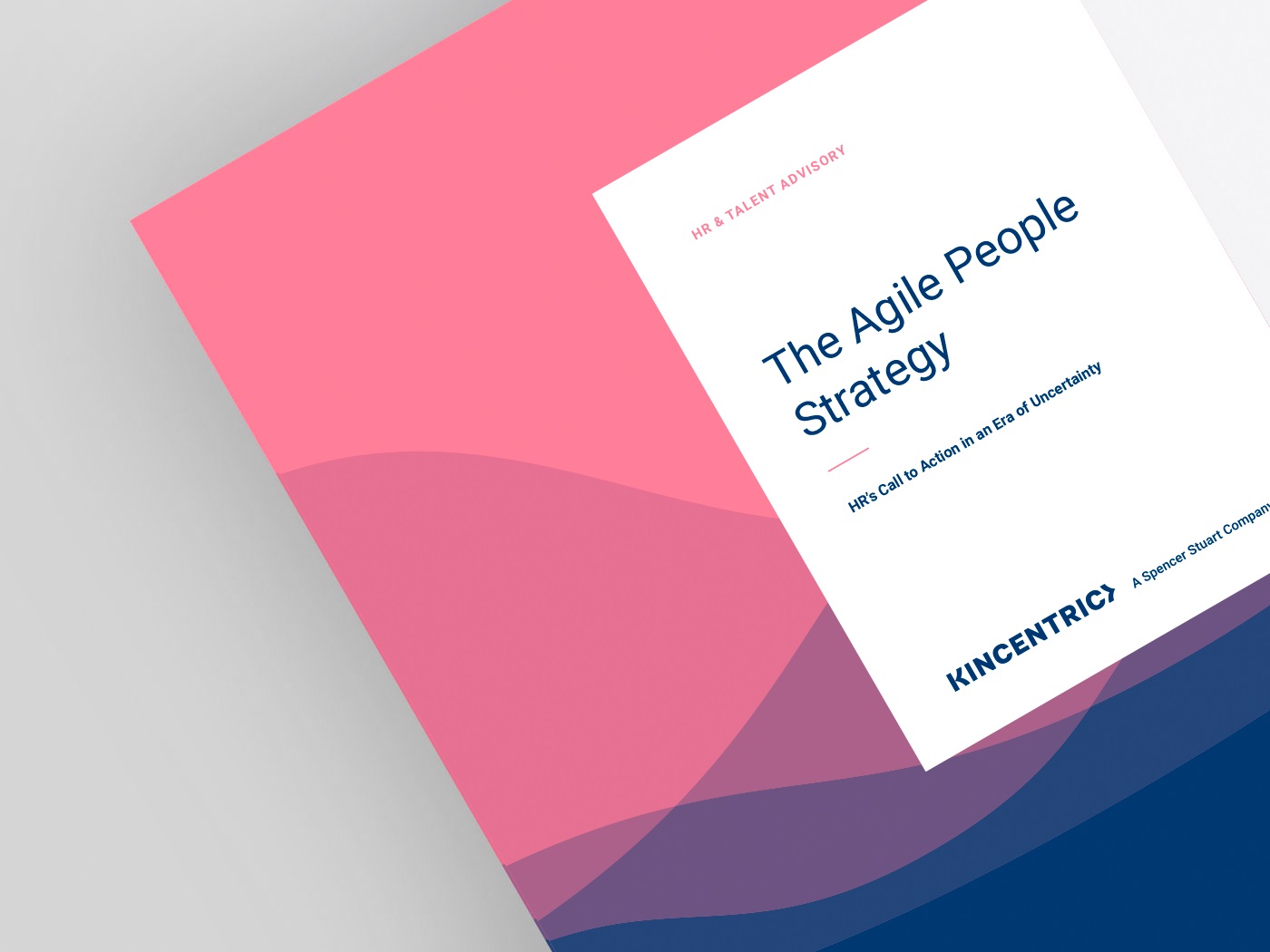
Human Resources must rise to meet both the challenges and the opportunities presented by the COVID-19 pandemic and ensuing uncertainty. Doing so requires a new approach to people strategy development and activation. Are you ready?
The COVID-19 pandemic has created an unprecedented crisis for organizations large and small around the world. While responses will differ based on an organization’s specific industry and its footing going into the crisis, all organizations will need to respond to new threats or opportunities. The period of uncertainty that lies before us will undoubtedly require rapid tactical shifts in business strategy. Our counsel to CHROs remains clear and steadfast: the seismic changes in market conditions, customer preferences and workforce dynamics will require you to revisit your people strategy in rapid fashion. If you have not already done so, now is the time to adopt an agile approach that starts with a deep understanding of your business strategy and the degree to which it has been, or could be, disrupted.
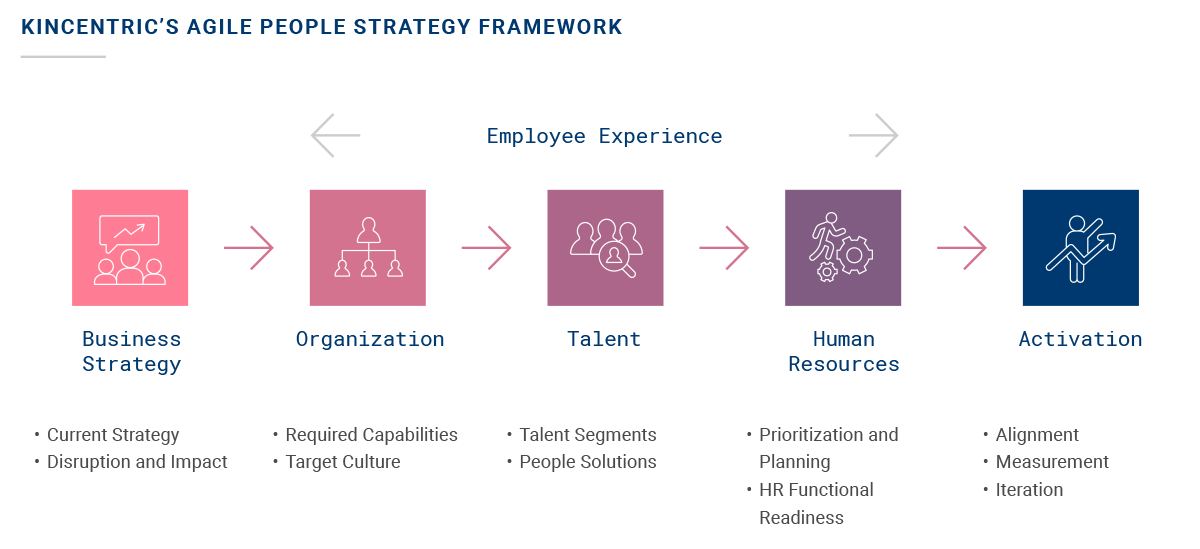
The Agile People Strategy Framework is not a prescription – rather, it is a process by which you identify, prioritize and continuously improve upon talent, organizational and HR solutions to deliver the greatest impact on business outcomes and enable your desired employee experience, based on the stage in which the organization is currently operating. In the pages that follow, we outline how this framework can be applied to your organization.
In the best of times, new people solutions are often set in motion without a clear connection to what will drive business results and without a plan to measure the value they provide. This is a luxury most organizations can no longer afford. To get the most out of your investments, there must be strong alignment between business strategy and people strategy. The first step in developing your people strategy is to “unpack” your current business strategy and understand the value discipline – customer intimacy, product leadership or operational excellence1 – that sets your organization apart from the competition.
At the onset of crisis, some organizations will need to respond quickly, whereas others may continue to thrive but need a plan for potential impacts down the road. Beyond their initial response, organizations may need to move quickly and in a non linear fashion between navigating crisis, stabilizing and thriving. In each of these stages, the focus and tactics may differ.

As you navigate these stages, new and existing competitors will be looking to disrupt and proactively influence what customers value and how it is delivered. Having a clear strategy and the agility needed to adapt will be critical to future success. Your people strategy must be ready to pivot and it all starts with ensuring you have the right organizational capabilities.
As we emerge from the current environment and face continued uncertainty, new business challenges will require a broader array of organizational capabilities to thrive as well as a new definition of the talent segments critical for enabling those capabilities.
It will not be enough to focus only on those capabilities that support your current business strategy. Looking to the business response in the stages outlined previously, it is clear that a broader set of organizational capabilities is required. For example, the ability of an organization to navigate a crisis with agility is often the key to survival. However, the importance of agility quickly shifts to building organizational resilience as the business stabilizes. Resilience is key to both preparing for a new crisis brought about by aftershocks (e.g., regulatory changes, business model disruptions) and preparing the organization to pivot into growth mode again.
You must also consider the need for the organization to quickly adapt again, regardless of the stage in which you currently find yourself. Understanding the capabilities required for today as well as new challenges that may arise and how they will affect the organizational capabilities required for your organization is critical to your ability to thrive into the future.
Additionally, identifying which workforce talent segments will have the greatest impact on your organizational capabilities is a critical step to ensure your people strategy drives business outcomes, and a broader view of talent segments is now required. During the crisis, many organizations were caught off-guard by the segments that mattered, failing to fully recognize the importance of virtual workers and those newly considered to be essential, such as customer-facing employees and production workers. Your talent segments that matter must now include those that enable organizational resilience and agility in addition to the segments that are considered differentiators for delivering on the core business, such as R&D or engineering.
Organizational culture — the underlying beliefs, assumptions and unconscious behaviors about how work gets done — is the cornerstone of how an organization responds to change. Culture can either enable or hinder your business performance and your ability to navigate a crisis. As such, articulating a target culture that supports your strategic business objectives is a critical step. Taking a realistic assessment of where you are today is critical to understanding the effects it may have on your ability to execute the business strategy as well as your people strategy. Within the context of your people strategy, the implications of a gap between your current culture and your required culture are two fold: You must identify the organizational behaviors and other shorter-term levers that can help to work around any cultural obstacles and design people solutions (i.e., who you select, how you lead and how you reward) that clearly align with the target culture and enable the required organizational capabilities.
The employee experience (eX) encompasses the entire employee life cycle from interview to exit. Identifying the moments that matter – those that can elevate, inspire, connect and remove friction – for the segments that matter is critical to ensuring alignment across all elements of your agile people strategy.
A strategic, intentional eX is one that brings purpose, culture and engagement to life by positively shaping the moments that matter. These moments are shaped, in large part, by the people solutions outlined below. Your ability to deliver a radically employee-centric, outside-in eX is dependent upon leadership, manager and HR function capability. Simply put, your eX is at the very heart of your strategy and getting it right has a meaningful impact on business performance. Kincentric’s research has shown that a strong, differentiated eX has a 3pt impact on EBITDA margin.
The speed of change and continued uncertainty highlight the need for flexible people solutions that can quickly enable the organizational capabilities and talent segments required to execute a modified business strategy and changing tactics.
We have seen throughout the response to COVID-19 that most organizations, regardless of how their business has been affected, shared many of the same priorities:
Despite these similarities, the focus of each organization has largely been dictated by the state of its business and whether it was navigating the crisis, stabilizing or continuing to thrive.

Looking to the future, many of our clients are now asking themselves if their existing people solutions meet current challenges and are flexible enough to adapt for a changing tomorrow.

It is important to recognize that all the factors above have an impact on organizational capability, culture and employee experience. To be most effective, these levers cannot be pulled independently — the key is to determine which ones to pull, and when, in a coordinated fashion.
Kincentric’s Agile People Strategy methodology can help you answer these pressing questions. By partnering with Kincentric, you will benefit from our flexible, data-driven and consultative approach designed to provide maximum impact.
A successful people strategy is dependent upon mobilization of the entire HR function. You will need to identify and prioritize the underlying HR Operating Model changes required to successfully implement your people strategy.
Evaluate HR Priorities in Light of New Strategic Imperatives
A strategic review of HR programs requires you to balance cost, delivery and quality. You will need to prioritize initiatives based on importance to enabling strategy and feasibility of successful delivery. To support agility, the prioritization of initiatives should leverage current employee sentiment from pulses, available cost estimates and broad scenario planning rather than rely on in-depth quantitative and qualitative research for finalizing decisions. To prioritize, focus on addressing these four critical questions:
Once you’ve decided what to prioritize, immediately shift investments and allocate resources to directly align to prioritized programs. In addition, make any necessary changes to governance structures and decision-making that may slow down rapid reallocation of resources.
Ensure That Your HR Operating Model Is Ready to Deliver
Your people strategy and HR Operating Model are inextricably linked and reprioritizing people solutions will require changes to how HR delivers services. This includes changes to your structure, processes, technology and capabilities. As you identify required operating model changes to enable a more agile people strategy, make sure they:
The need for a more flexible HR Operating Model that enables agility and delivers integrated solutions preceded this crisis, and the ensuing uncertainty has only served to amplify this need. Kincentric’s NeXt HR provides insights into how CHROs can break down functional silos and build agility into their function to deliver business results and optimize the employee experience.
Organizational Alignment and Change
The ongoing, iterative nature of an agile approach to strategy will create a significant amount of change, which must be managed. For the organization, change will be constant, non linear and often unplanned. Establishing a small, nimble guiding coalition of key stakeholders early in the process will enable you to more quickly establish buy-in and create support for future iteration needed to address unplanned changes.
At an individual level, change will relate to the physical and emotional needs of employees, managers and senior leaders, as they continue to experience deep, personal and varied residual impacts from the global pandemic. Within this context, all significant changes to your people strategy will require thoughtful stakeholder analysis and consideration of the change implications for the workforce. At a tactical level, change management discipline and tactics, such as celebrating small wins to establish momentum, must be integrated into everyday operations to ensure successful execution.
Demonstrating Impact
An agile approach to people strategy also requires you to establish processes and governance structures for making regular, iterative and quick decisions on what initiatives or programs to start, stop or accelerate. To do so effectively, it is time to reevaluate the what, when and how of measurement aimed at accelerating organizational impact. Taking an act-listen-adjust approach to measurement:
By taking these steps, HR is empowered to rapidly reconfigure plans, programs and processes to successfully enable agility.
1 - HBR - Customer Intimacy and Other Value Disciplines - Treacy and Wiersema (1993)
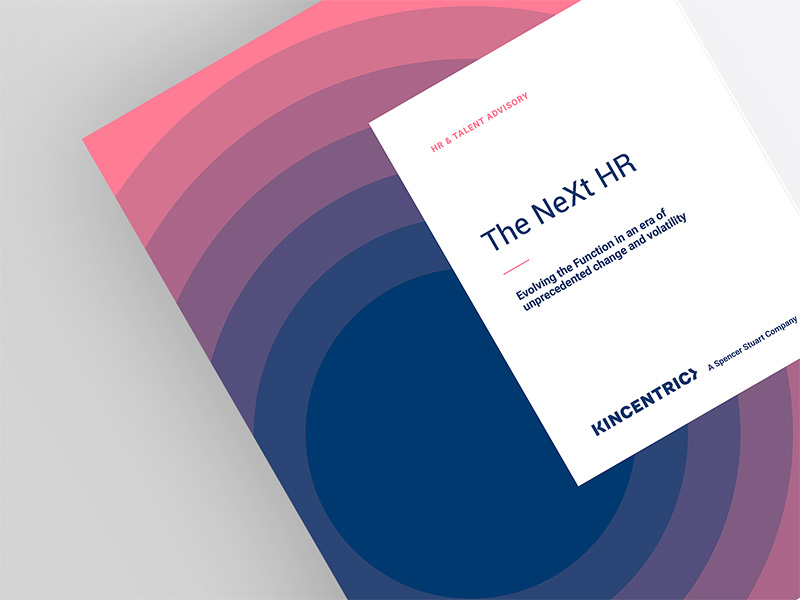
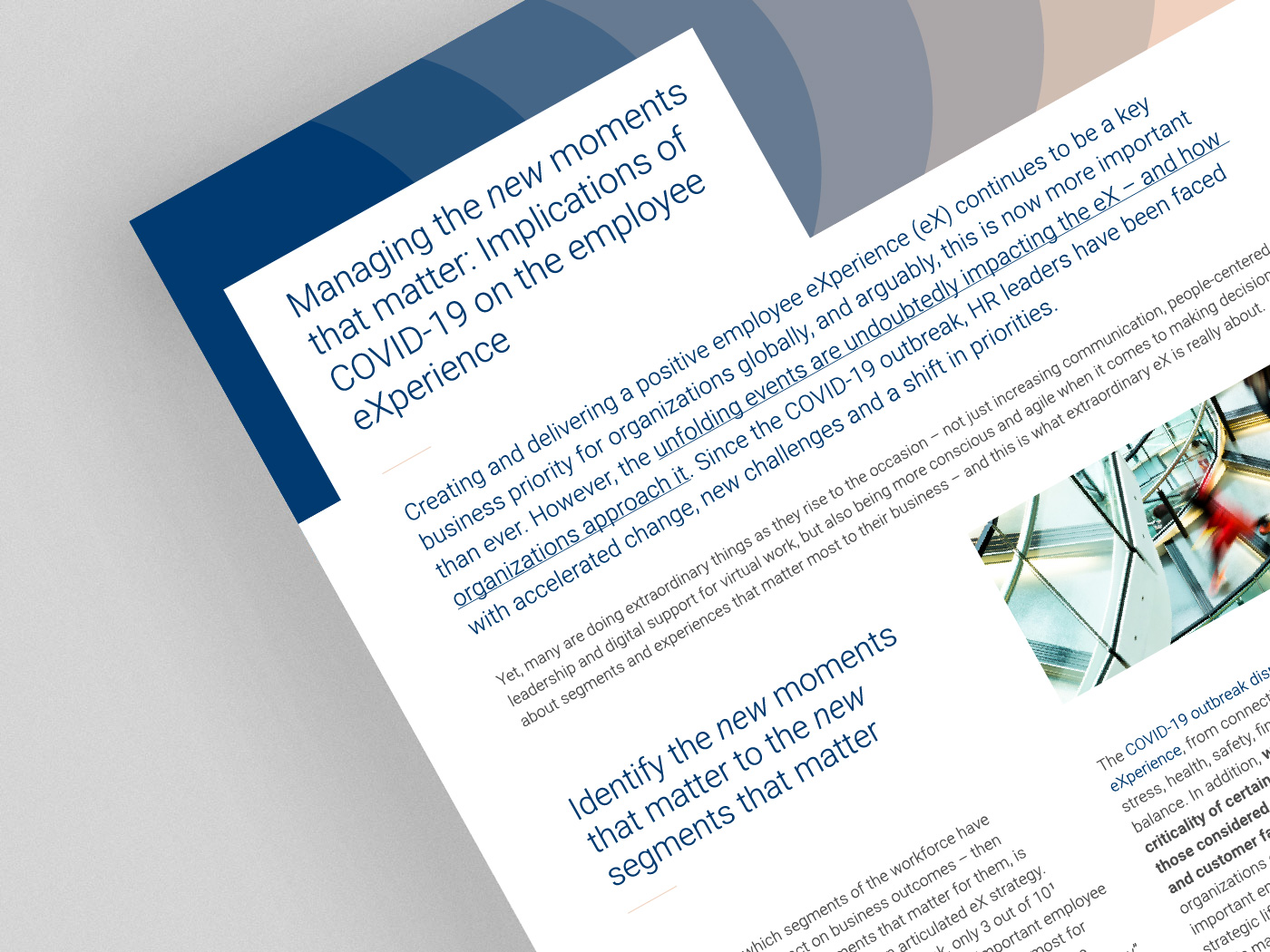
Creating and delivering a positive employee eXperience (eX) continues to be a key business priority for organizations globally.
Multiple translations are available.
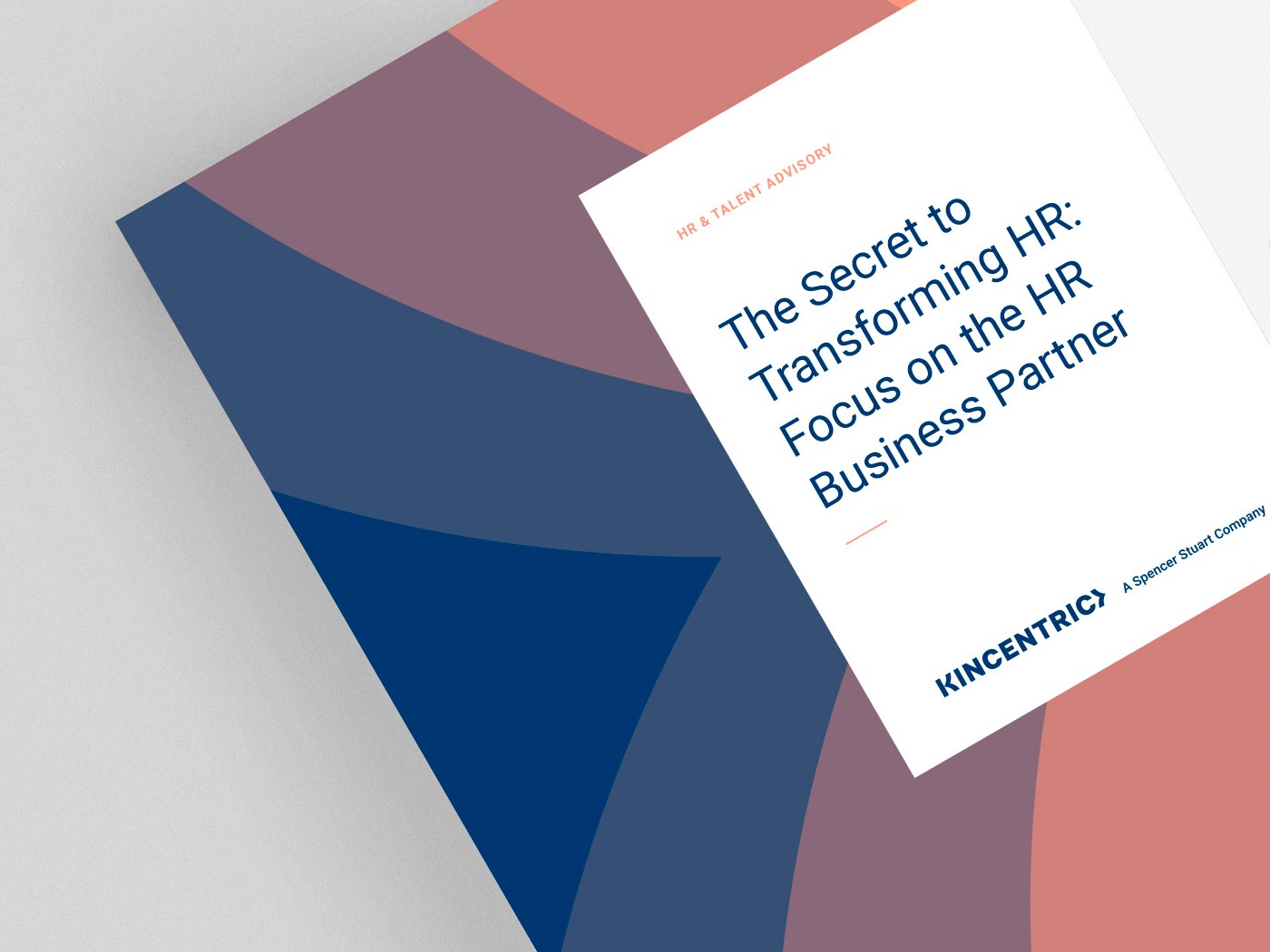
The most important levers for delivering great HR transformation outcomes are getting the right HR business partners with the right capabilities engaged in the right behaviors.